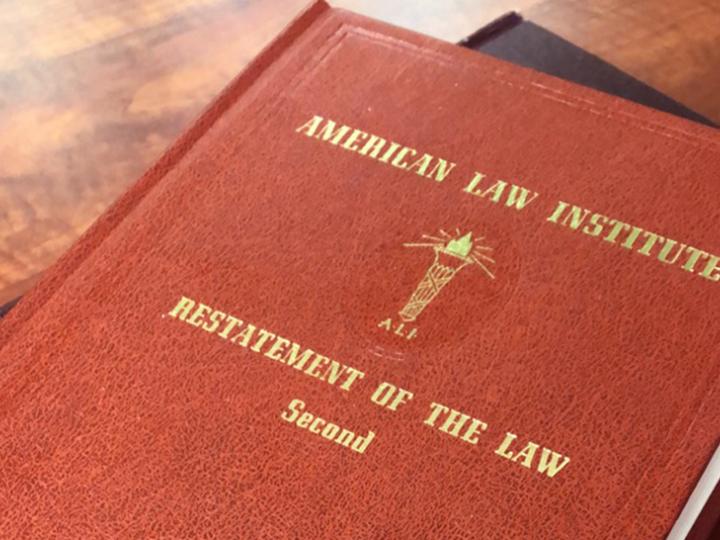In a recent U.S. Supreme Court decision, Herrera v. Wyoming, No. 17-532 (May 20, 2019), the majority and the dissent both cited to the Restatements of the Law, Judgments, as part of their discussion of issue preclusion in the context of a criminal proceeding.
In Herrera, the state of Wyoming charged a member of the Crow Tribe who shot several elk in the Bighorn National Forest in Wyoming with taking elk off-season or without a state hunting license. Although the defendant asserted that he had a protected right to hunt in the national forest under an 1868 Treaty between the United States and the Crow Tribe, the trial court did not permit him to advance a defense based on the treaty and a jury convicted him. The state appellate court affirmed, concluding that the defendant was barred by issue preclusion from relitigating whether the Crow Tribe’s hunting right was still valid based on Crow Tribe of Indians v. Repsis, 73 F.3d 982 (10th Cir. 1995), in which the U.S. Court of Appeals for the Tenth Circuit, reviewing the same treaty right, ruled that the right had expired when Wyoming became a state. Repsis in turn relied on a prior Supreme Court decision, Ward v. Race Horse, 163 U.S. 504 (1896), which determined that Wyoming’s entry into statehood extinguished a similar hunting right reserved in an 1868 Treaty between the United States and the Shoshone and Bannock Tribes. In addition, the state appellate court concluded that the treaty right applied only on “unoccupied” lands, and the national forest became “occupied” when it was created. The Wyoming Supreme Court denied the defendant’s petition for review.
The U.S. Supreme Court vacated and remanded, holding, among other things, that the Repsis decision did not preclude the defendant from arguing that the 1868 Treaty right survived Wyoming’s statehood, because a change in law arising from Minnesota v. Mille Lacs Band of Chippewa Indians, 526 U.S. 172 (1999), justified an exception to the application of issue preclusion under Restatement of the Law Second, Judgments § 28, Comment c. In Mille Lacs, the Supreme Court concluded that the hunting rights in an 1837 Treaty between the United States and the Chippewa Tribe survived after Minnesota was admitted to the Union. Associate Justice Sonia Sotomayor, writing for the majority, explained that, although Mille Lacs stopped short of explicitly overruling Race Horse, it methodically repudiated that decision’s logic, such that it had to be regarded as retaining no vitality. The Supreme Court accordingly concluded that the Crow Tribe’s hunting right survived Wyoming’s statehood, and the lands within Bighorn National Forest did not become categorically “occupied” when set aside as a national reserve.
Associate Justice Samuel A. Alito, Jr., in a dissent, argued that the defendant was precluded by the judgment in Repsis from relitigating the continued validity of the hunting right conferred by the 1868 Treaty, reasoning that the judgment in Repsis rested on two independently sufficient grounds, namely, the “equal footing” doctrine and the conclusion that the terms of the Act admitting Wyoming to the Union manifested a Congressional intent not to burden the state with the right created by the 1868 Treaty, and Mille Lac only appeared to repudiate the applicability of the “equal footing” doctrine. The dissent explained that, under Restatement of the Law, Judgments § 68, a judgment based on alternative grounds was determinative on both grounds, although either alone would have been sufficient to support the judgment. Justice Alito asserted that, although Restatement of the Law Second, Judgments § 27, Comment i, reversed that view by recommending that a judgment based on the determination of two independent issues was not conclusive with respect to either issue standing alone, the first Restatement had the more compelling position. Moreover, the dissent explained that the Crow Tribe not only had an opportunity in Repsis to litigate the subject of the alternative ground, it actually did so; consequently, the dissent argued, the narrow exception to issue preclusion set forth in Restatement of the Law Second, Judgments § 28(5)(c) did not apply.
The dissent also cited Restatement of the Law Second, Judgments § 33 in explaining that Repsis was a declaratory-judgment action aimed at settling the Tribe’s hunting rights, which bound the defendant to its resolution of the occupied-land issue.
Read the full opinion here.
